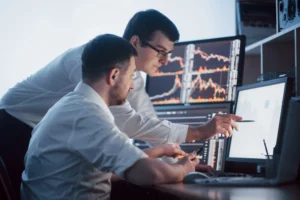Futures trading continues to attract traders worldwide because it offers leverage, flexibility, and access to diverse markets. From commodities such as crude oil and natural gas to global currencies, stock indices, and government bonds, futures contracts give participants the ability to trade with precision and efficiency. Yet, while the opportunities are vast, success depends on applying the right futures trading strategies. In 2025–26, markets are being shaped by geopolitical uncertainty, shifting interest rates, and rapid technological advances. Traders who follow disciplined and structured futures trading strategies are far more likely to achieve consistent results compared to those relying on speculation or emotion.
The best futures trading strategies are not about chasing quick wins but about applying proven methods that combine technical indicators with a clear understanding of market fundamentals. Futures trading techniques such as trend following, mean reversion, and spread trading help traders stay aligned with price movements while avoiding common mistakes. In today’s fast-changing financial environment, risk management in futures has become just as important as identifying profitable opportunities. Without proper control over leverage, position sizing, and protective stops, even experienced traders can face heavy losses.
By combining technical knowledge with profitable futures trading methods, traders gain both confidence and clarity. These strategies not only improve decision-making but also build discipline, which is the cornerstone of long-term success in futures markets. The following top five futures trading strategies represent the most effective approaches for 2025–26, offering traders a framework to survive volatility, capture strong opportunities, and trade with sustainable consistency.
Trend Following as a Core Futures Strategy
Trend following has remained one of the best futures trading strategies for decades because it captures the large market moves that drive profitability. Rather than trying to predict turning points, traders ride the prevailing momentum. This makes it one of the simplest yet most effective futures trading techniques.
Take crude oil as an example. After supply cuts or geopolitical tensions, oil futures often trend strongly upward. A trader using a 50-day moving average confirms this direction and enters long positions while prices stay above it. The exit occurs when prices break below the average. This structured approach removes guesswork and builds discipline.
Why trend following works in futures trading today:
- Trends often last longer than expected —strong macroeconomic themes, like inflation or energy shortages, can keep markets trending for months. Traders who stay with the move capture significant profits instead of exiting too early.
- Institutional flows and algorithmic trading amplify moves – Large funds and AI-powered systems trade high volumes, pushing trends further and creating momentum that retail traders can follow.
- Simple rules reduce emotional trading mistakes —future trading strategies built on indicators like moving averages or breakout levels limit impulsive decisions and maintain consistency.
Even with its strengths, trend following requires risk management in futures. Markets can reverse unexpectedly, especially during news events. Traders apply trailing stops and volatility filters to secure profits and avoid false signals. When used with patience and discipline, trend following remains one of the most profitable futures trading methods for 2025–26.
Mean Reversion with Volatility Filters
Another key futures trading strategy is mean reversion, which assumes that prices eventually return to their long-term average after extreme movements. This method works well in sideways or range-bound markets where prices repeatedly oscillate between highs and lows. It is one of the most widely used futures trading techniques among short-term traders.
For example, if S&P 500 futures rise sharply above the 20-day moving average after strong earnings, a mean reversion trader may short the contract, expecting prices to drift back toward the mean. Similarly, if prices fall far below fair value during market panic, traders go long.
How traders apply mean reversion in practice:
- Bollinger Bands identify extremes —prices trading outside the bands often indicate overextension. Traders use this as a signal for reversal.
- RSI confirms momentum exhaustion —an RSI above 70 signals overbought conditions, while below 30 signals oversold. These levels guide entries.
- The VWAP indicates fair value during the day; prices that are significantly above the VWAP tend to decrease, while those that are significantly below it tend to increase.
Despite its reliability, mean reversion must be filtered by volatility. Global events, such as central bank policy shifts, can cause prices to move further without reverting immediately. Traders therefore reduce position size, set strict stop losses, and use volatility filters to avoid false trades. By following a strict approach, mean reversion can be one of the most profitable ways to trade futures, blending quick opportunities with careful risk management.
Spread Trading for Stability and Lower Volatility
Spread trading is considered one of the best futures trading strategies for those who seek stability. Instead of betting on outright direction, traders profit from the price difference between related contracts. Institutions and retail traders alike favor spread trading because it lowers volatility and provides smoother returns.
There are two major approaches. Calendar spreads involve buying and selling the same asset in different months. For instance, a trader may buy June crude oil contracts and sell September contracts to capture seasonal demand differences. Inter-commodity spreads involve related products, such as going long corn while shorting wheat. Both methods take advantage of relative price behavior rather than absolute market moves.
Why spread trading works in 2025–26:
- Spreads, reflecting differences, experience less volatility than outright trades, making them less susceptible to large shocks in the broader market.
- Reduced margin requirements – Exchanges often require lower margins for spread trades, allowing traders to allocate capital more efficiently.
- Predictable seasonal and fundamental drivers —natural gas spreads often widen in winter due to heating demand, while agricultural spreads respond to harvest cycles.
Even so, spread trading is not risk-free. Unexpected policy changes, extreme weather, or supply shocks can distort spreads. Traders monitor open interest, economic calendars, and global events to manage exposure. With proper oversight, spread trading becomes one of the most profitable futures trading methods, combining risk management in futures with consistent performance.
Event Driven Futures Trading in 2025–26
Events create some of the most dramatic moves in futures markets. We expect central bank policies, geopolitical conflicts, supply chain disruptions, and climate-linked risks to remain key market drivers in 2025–26. Event-driven futures trading strategies capitalize on these sudden bursts of volatility.
For example, Treasury futures often rally when the Federal Reserve signals a rate cut. Similarly, natural gas futures can surge when weather forecasts predict colder winters. Traders who anticipate these catalysts or react quickly to breaking news position themselves for high returns.
How traders succeed with event-driven strategies:
- Tracking economic calendars —key releases such as interest rate decisions, inflation reports, and employment data create predictable volatility.
- Examining market positioning can limit upside if markets are already heavily long prior to positive news.Position analysis prevents false expectations.
- Avoiding excessive leverage —events can defy consensus forecasts. Smaller positions mitigate the risk of unexpected moves wiping them out.
Event-driven trading requires a strong understanding of macroeconomics. It also demands strict risk management in futures because outcomes are never certain. Many traders use options on futures to hedge positions ahead of events. When executed with preparation, event-driven trading converts volatility into profitable futures trading methods.
Options on Futures for Safer Hedging
Options on futures provide one of the best futures trading strategies for risk control. They allow traders to participate in market movements while clearly defining downside risk. This strategy is popular in volatile environments like 2025–26, when markets react sharply to interest rate policies, geopolitical issues, or commodity supply shocks.
A practical example is buying S&P 500 futures while simultaneously purchasing a protective put option. If the market rises, the futures contract generates profits. The put option restricts the downside in the event of a decline. This combination provides both opportunity and safety.
Why options on futures remain effective:
- Defined losses with open profit potential —the maximum risk is known upfront, while upside remains unlimited.
- Applicable across asset classes —traders use options on futures in commodities, equities, currencies, and bonds.
- Valued by both retailers and institutions—retail traders appreciate security, while institutions hedge large exposures with options.
In 2025–26, options on futures will remain a vital part of risk management in futures. With volatility likely to remain high, this technique ensures traders can hold positions confidently. Traders create profitable futures trading methods that withstand changing market conditions by combining directional exposure with hedging tools.
Practical Tips for Applying These Futures Trading Strategies
Even the best futures trading strategies fail without discipline. Success in 2025–26 requires structured planning and consistent application of risk control. These tips provide guidance for using futures trading techniques effectively.
Always backtest strategies before live trading.
Backtesting shows how a strategy would have performed on past data. For example, testing a trend-following method on gold futures from 2019 to 2023 reveals strengths and weaknesses. Backtesting builds confidence and avoids trading unproven setups.
Combine technical and fundamental analysis for accuracy.
Technical indicators reveal patterns, but fundamentals explain why prices move. For instance, corn futures may look oversold on RSI, but ignoring a harvest shortage could be dangerous. Combining both factors improves profitable futures trading methods.
Limit leverage to reduce emotional stress.
Futures markets allow high leverage, but excessive use destroys accounts. A trader using 20x leverage on Nasdaq futures risks large losses on small moves. Professionals prefer moderate leverage around 3x to 5x. This supports risk management in futures and reduces emotional pressure.
Diversify positions with spreads and options.
Concentrating on one contract increases risk. Instead, traders diversify with spreads or hedge with options. For example, long crude oil with a protective put option reduces downside. Diversification creates profitable futures trading methods with balanced exposure.
Use stop losses and trailing stops consistently.
Stop losses Protect capital by closing trades at set levels. Trailing stops secure profits as markets move in favor. For example, a trailing stop of 15 points on S&P 500 futures locks gains during rallies. Consistent use of stops is central to risk management in futures.
Final Thoughts
The top five futures trading strategies for 2025–26 provide traders with structure and adaptability. Trend following captures large moves, mean reversion identifies short-term corrections, spread trading offers stability, event-driven trading capitalizes on volatility, and options on futures ensure protection.
Each approach becomes powerful when combined with strict discipline. The best futures trading strategies are not about predicting every market turn but about applying proven techniques with consistency. Risk management in futures remains the foundation of long-term success. Profitable futures trading methods grow from patience, preparation, and continuous learning.
In 2025–26, traders who adapt to new market realities while following structured futures trading strategies will thrive. By focusing on planning and disciplined execution, they secure both profitability and sustainability in the evolving futures landscape.
Frequently Asked Questions on Futures Trading Strategies
1. What are the best futures trading strategies for 2025–26?
The best futures trading strategies in 2025–26 include trend following, mean reversion with volatility filters, spread trading, event-driven setups, and options on futures. These methods balance opportunity and risk, making them adaptable to different markets.
2. How do futures trading techniques improve risk management in futures?
Futures trading techniques provide structure and prevent impulsive trades. By using strategies like trailing stops, hedging with options, and position sizing, traders improve risk management in futures while maintaining steady performance.
3. Can futures trading strategies be profitable for beginners?
Yes, beginners can use profitable futures trading methods if they start with simple approaches like trend following and calendar spreads. Consistency comes from discipline, backtesting, and practicing strict money management.
4. Why is risk management important in futures trading strategies?
Futures contracts are leveraged, meaning small market moves can cause big gains or losses. Strong risk management in futures, such as stop losses and limited leverage, ensures survival during volatile periods.
5. Which futures trading techniques are most suitable for volatile markets?
In high-volatility markets, event-driven strategies and options on futures are most effective. They provide flexibility, defined risk, and the ability to profit from sudden price swings.
6. Are profitable futures trading methods different for commodities and equities?
Yes, commodities often rely on seasonal patterns and spreads, while equity index futures respond more to macroeconomic data and global sentiment. Traders adapt futures trading strategies to the specific market for best results.
7. How can I combine multiple futures trading strategies for better results?
Many traders use hybrid approaches. For example, combining trend following with options hedging or using mean reversion alongside spread trading. Blending strategies creates profitable futures trading methods that are more resilient.
read here to learn more about “How Supertrend Indicator Strategy Works for Profitable Trading“

I’m Chaitali Sethi — a seasoned financial writer and strategist specializing in Forex trading, market behavior, and trader psychology. With a deep understanding of global markets and economic trends, I simplify complex financial concepts into clear, actionable insights that empower traders at every level. Whether it’s dissecting winning strategies, breaking down market sentiment, or helping traders build the right mindset, my content bridges the gap between information and implementation.




